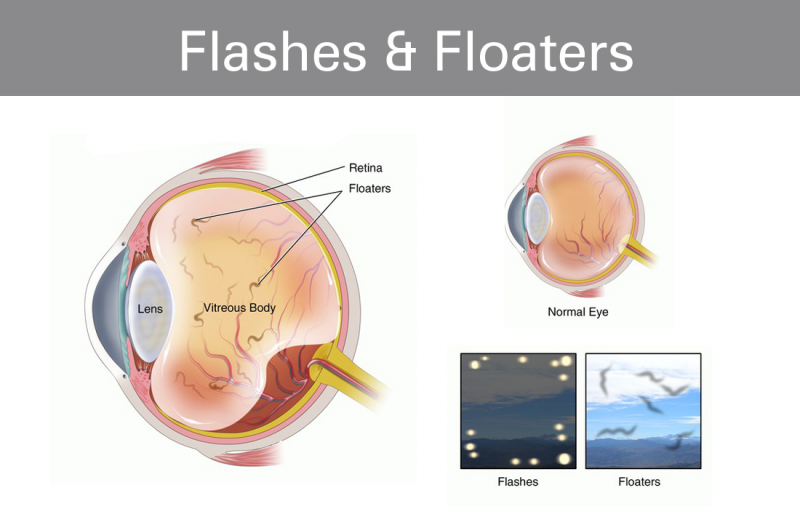Sepsis Blood Infection and Its Devastating Consequences

The Silent Emergency: What is Sepsis Blood Infection?
Sepsis, often referred to as a "hidden killer," is a life-threatening medical condition that demands immediate attention and action. At its core, sepsis is a systemic response to an infection that spirals out of control, leading to widespread inflammation and potentially catastrophic consequences.
Understanding the Mechanism of Sepsis Blood Infection
Sepsis occurs when the body's natural response to an infection becomes uncontrolled and triggers a massive inflammatory reaction. This overwhelming response, intended to combat the infection, paradoxically causes damage to the body's own tissues and organs.
When an infection enters the bloodstream, it can rapidly spread and trigger sepsis. This is known as sepsis blood infection or bacteremia. The infection can originate from various sources, including:
- Pneumonia or other respiratory infections
- Urinary tract infections (UTIs)
- Skin infections, such as cellulitis or abscesses
- Gastrointestinal infections, like appendicitis or diverticulitis
The Devastating Consequences of Untreated Sepsis
If left untreated, sepsis can progress rapidly, leading to:
- Organ failure: Sepsis can cause damage to vital organs, including the kidneys, liver, lungs, and heart.
- Septic shock: A severe drop in blood pressure, which can lead to inadequate blood flow to vital organs.
- Respiratory failure: Inflammation and fluid buildup in the lungs can impair oxygen exchange.
- Cardiovascular collapse: Sepsis can cause cardiac arrest, leading to death.
It is essential to recognize the warning signs of sepsis and seek immediate medical attention if you or a loved one experiences:
- Extreme difficulty breathing
- Confusion or disorientation
- Rapid heartbeat
- Fever or hypothermia
Early detection and treatment are critical in combating sepsis. Timely medical intervention can significantly improve outcomes and prevent long-term damage.
Causes and Risk Factors
Sepsis, a potentially life-threatening condition, arises from the body's overwhelming response to an infection. Various types of infections can trigger sepsis, and understanding these causes is crucial for prevention and timely intervention.
Infectious Triggers
Bacterial infections are the most common culprits behind sepsis. These include:
- Pneumonia: A lung infection that can spread bacteria into the bloodstream.
- Urinary tract infections (UTIs): Bacterial infections in the kidneys or bladder can progress to sepsis.
- Skin infections: Bacterial infections, such as cellulitis or abscesses, can spread rapidly.
However, sepsis is not limited to bacterial infections alone. Other types of infections can also lead to this condition:
- Viral infections: Such as influenza, COVID-19, or viral pneumonia.
- Fungal infections: Including candidemia (bloodstream infection caused by Candida fungus).
- Parasitic infections: Rarely, parasitic infections like malaria or toxoplasmosis can trigger sepsis.
Population Vulnerabilities
Certain individuals are more susceptible to developing sepsis due to their compromised immune systems or underlying health conditions:
- People with weakened immune systems: Those with HIV/AIDS, cancer, or taking immunosuppressive medications.
- Older adults: Age 65 and above, with diminished immune responses.
- Chronic medical conditions: Diabetes, kidney disease, liver disease, or heart disease.
Recognizing these causes and risk factors is crucial for early detection and effective management of sepsis. By understanding who is most vulnerable and what triggers sepsis, healthcare providers and individuals can work together to prevent this devastating condition.
Recognizing the Warning Signs Sepsis can be a stealthy and deadly condition, often masquerading as other less severe illnesses. Recognizing the warning signs is crucial to prevent devastating consequences. It's essential to identify the symptoms promptly and seek medical attention immediately. Early Warning Signs Early detection is critical in treating sepsis effectively. Be aware of the following early symptoms: Fever (above 101.5°F) or hypothermia (below 95°F) Chills or feeling cold Rapid heartbeat (above 90 beats per minute) Difficulty breathing or shortness of breath Pale or mottled skin Sweating or clamminess Severe Symptoms: Seek Immediate Medical Attention If you or a loved one experiences any of the following severe symptoms, seek immediate medical attention: Confusion, disorientation, or loss of consciousness Severe abdominal pain or discomfort Vomiting or diarrhea Decreased urine output or inability to urinate Severe headache or stiff neck Weakness or fatigue The SEPSIS Mnemonic To remember the warning signs of sepsis, use the SEPSIS mnemonic: S - Slurred speech or confusion E - Extreme pain or discomfort P - Pale or mottled skin S - Shivering or feeling cold I - Inability to urinate S - Shortness of breath High-Risk Groups Certain individuals are more susceptible to sepsis, including: Older adults (65+ years) Young children (under 1 year) People with compromised immune systems (e.g., HIV/AIDS, cancer) Those with chronic medical conditions (e.g., diabetes, kidney disease) Pregnant women Don't Delay – Act Fast Sepsis is a medical emergency that requires prompt attention. If you suspect someone has sepsis, call emergency services or seek immediate medical help.Diagnosis and Treatment Sepsis, a potentially life-threatening condition, requires prompt and accurate diagnosis followed by swift and effective treatment. The diagnostic process typically involves a combination of clinical evaluation, laboratory tests, and imaging studies. Early Detection is Key Early diagnosis is crucial in managing sepsis effectively. Healthcare professionals rely on a combination of the following methods: Blood Tests: These are critical for identifying the presence of infection, inflammation, and organ dysfunction. Key tests include complete blood counts (CBC), blood cultures, and lactate levels. Imaging Studies: Imaging tests such as X-rays, CT scans, and ultrasound help identify the source of infection. Physical Examination: Clinicians assess patients for signs of infection and organ dysfunction. Comprehensive Treatment Approach Treatment of sepsis is multifaceted, focusing on eliminating the infection, supporting organ function, and restoring balance to the body's systems: Antibiotics: Early administration of broad-spectrum antibiotics is crucial. As the source of infection is identified, antibiotic therapy may be tailored. Fluid Replacement: Intravenous fluids are used to maintain blood pressure and support organ function. Support for Affected Organs: This may include oxygen therapy, mechanical ventilation for respiratory support, and dialysis if kidneys are affected. Monitoring: Continuous monitoring in an intensive care unit (ICU) setting allows for rapid adjustments to treatment. Challenges and Considerations Despite advancements, diagnosing and treating sepsis presents challenges: Timely Intervention: Delayed recognition can lead to worse outcomes. Antibiotic Resistance: Rising resistance complicates effective antibiotic therapy. Individualized Care: Treatment must be tailored to the patient’s specific needs and response. Effective management of sepsis hinges on early recognition, prompt intervention, and comprehensive care. Improving outcomes requires ongoing research, enhanced awareness, and meticulous attention to individual patient needs.
Prevention Strategies
Protecting Yourself from Sepsis
Sepsis can be a silent killer, but there are ways to protect yourself and your loved ones from its devastating consequences. By understanding the prevention strategies, you can significantly reduce the risk of developing sepsis.
1. Practicing Good Hygiene
Good hygiene is the first line of defense against infections. Wash your hands frequently with soap and water, especially:
- After using the bathroom
- Before and after preparing food
- After blowing your nose, coughing or sneezing
- After touching animals or their waste
2. Getting Vaccinated
Vaccinations play a crucial role in preventing infections that can lead to sepsis. Make sure you and your family are up-to-date on all recommended vaccinations, including:
- Flu shots
- Pneumococcal vaccines
- Meningococcal vaccines
3. Managing Chronic Conditions
Chronic conditions like diabetes, kidney disease, and liver disease can increase your risk of developing sepsis. Manage your conditions by:
- Taking medications as prescribed
- Monitoring your blood sugar levels
- Attending regular check-ups with your healthcare provider
4. Prompt Medical Attention for Suspected Infections
If you suspect an infection, don't hesitate to seek medical attention. Early recognition and treatment are critical in preventing sepsis. Be aware of the signs and symptoms of infection, such as:
- Redness, swelling, or warmth around a wound
- Chills or fever
- Shortness of breath
- Confusion or disorientation
Remember, prompt medical attention is essential in preventing sepsis. Don't wait – seek help immediately if you suspect an infection.
The Devastating Consequences of Sepsis
Sepsis, a seemingly silent killer, can unleash a cascade of devastating consequences on its victims, leaving a trail of physical, emotional, and psychological damage in its wake. If left untreated or improperly managed, sepsis can rapidly escalate into a life-threatening condition, wreaking havoc on multiple organ systems and leaving survivors with lasting scars.
Organ Failure: The Immediate and Irreversible Consequences
One of the most catastrophic consequences of sepsis is organ failure. As the infection spreads, it can cause widespread inflammation, damaging vital organs such as the kidneys, liver, lungs, and heart. This can lead to:
- Acute kidney injury (AKI), requiring dialysis or even transplantation
- Respiratory failure, necessitating mechanical ventilation
- Hepatic dysfunction, impairing liver function and metabolism
Long-Term Physical Consequences: Amputations and Disability
Beyond organ failure, sepsis can also result in long-term physical disabilities, significantly impacting quality of life. Some common consequences include:
- Amputations: Gangrene or poor circulation may necessitate limb removal
- Chronic pain: Persistent pain can become debilitating, affecting daily activities
- Muscle weakness and fatigue: Prolonged illness can lead to muscle wasting and decreased mobility
- Impaired wound healing: Sepsis can compromise the body's ability to recover from injuries
Emotional and Psychological Toll: The Hidden Scars
The aftermath of sepsis can be just as devastating emotionally and psychologically as it is physically. Survivors often struggle with:
- Cognitive impairment: Sepsis can cause cognitive decline, memory loss, and concentration issues
- Depression: The trauma of sepsis can trigger or exacerbate depressive episodes
- Post-Traumatic Stress Disorder (PTSD): Flashbacks, anxiety, and nightmares can persist long after recovery
- Anxiety and fear: The fear of recurrence or lingering health concerns can become overwhelming
It is essential to recognize the warning signs of sepsis and seek immediate medical attention to prevent these devastating consequences. Early detection and proper treatment can significantly improve outcomes, reducing the risk of long-term damage and improving quality of life for survivors.
The Importance of Awareness and Action Sepsis, a potentially life-threatening condition, requires immediate attention and action. Unfortunately, it often goes unrecognized until it's too late, leading to devastating consequences. In this section, we'll explore the crucial role awareness and proactive measures play in combating sepsis. Raising the Alarm: The Power of Awareness Raising awareness about sepsis can significantly improve early detection and treatment. By understanding the signs and symptoms, individuals can seek medical attention promptly, reducing the risk of severe complications. Awareness campaigns and education initiatives can: Inform the public about sepsis risk factors, symptoms, and the importance of timely medical intervention Educate healthcare professionals on the latest diagnostic and treatment guidelines Encourage open communication between patients, families, and healthcare providers Early recognition and rapid response are critical in managing sepsis effectively. By spreading awareness, we can: Reduce misdiagnosis and delayed treatment Improve patient outcomes and survival rates Support research into innovative diagnostic tools and treatments Advocating for Change: Supporting Research and Better Healthcare Practices Supporting research and advocating for better healthcare practices are essential in reducing sepsis cases and improving patient care. This can be achieved through: Funding research into sepsis causes, prevention, and treatment Promoting evidence-based practices and guidelines in healthcare settings Encouraging transparency and accountability in healthcare delivery By working together, we can: Develop more effective diagnostic tools and treatments Improve healthcare infrastructure and emergency response systems Enhance patient safety and quality of care Taking Action: What You Can Do To make a difference, consider the following: Share your knowledge with others to spread awareness Support organizations working towards sepsis research and education Advocate for policy changes that prioritize healthcare quality and patient safety Participate in awareness campaigns and fundraising events Every effort counts in the fight against sepsis. By raising awareness and taking action, we can: Save lives Reduce suffering Create a safer, more responsive healthcare system Together, let's shine a light on this hidden killer and work towards a future where sepsis is recognized, treated, and defeated.














Comments ()